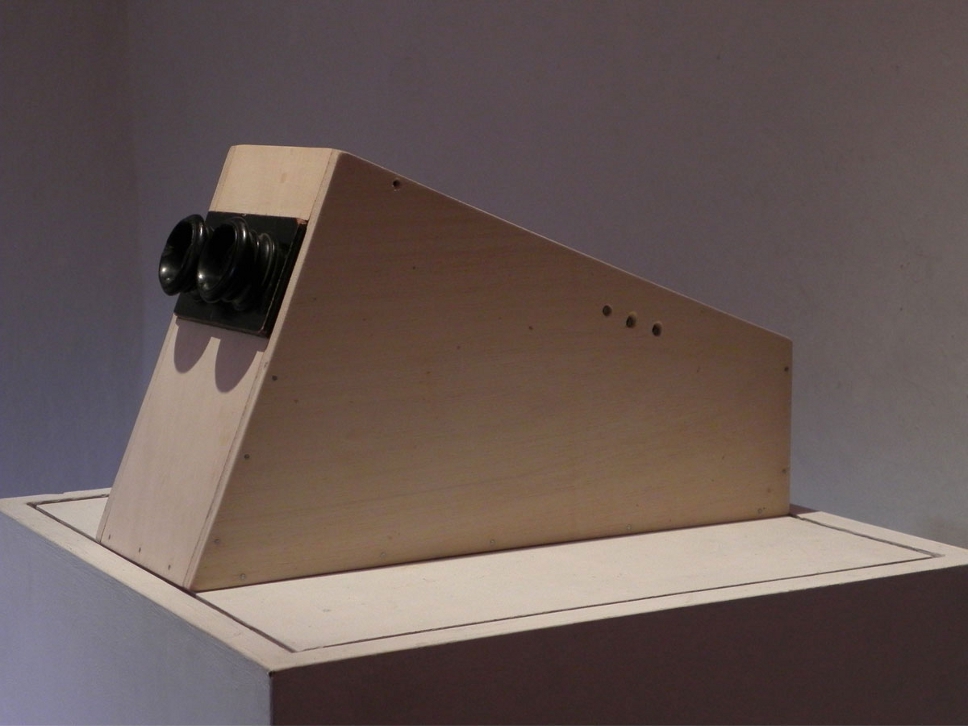Desaparición instantánea de dos movimientos
(Instant disappearance of two movements)
Antique estereoscopic device, wooden box, microprojector, stereoscopic video
Bolivia, 2013. Mexico, 2015
The artist Marcel Duchamp was interested in the concepts of the four dimensions and the different appearances (which he called "shadows") of the same reality. He was also interested in polar, binary concepts; like life and death, which have a point where they connect and unfold: their hinge.
The interest he had in these issues led him to approach stereoscopy since our mind "links" two perceptions or realities and makes them one, the hinge is raised in the mental interpretation of the information we receive with our pair of eyes.
Considering that this hinge works at a spatial and mental level, my intention was to add an extra hinge, an irony, based on that so-called fourth dimension (time) and its evolution between night and day. From that idea I created a stereoscopic 3D video, using the photographic technique of timelapse, and in which I played literally with the "shadows": in one eye the course of dawn is presented towards dusk and in the other that of dusk heading at dawn (both recorded in the same day) which will generate an instant in which both transitions will coincide in time, position of the sun and therefore in the perception of the shadows (ultrafast exposure 1). During all the other time the video is full of strange, incongruent shadows.
1. Phrase coined by Marcel Duchamp
A version was made in the city of La Paz, Bolivia (2013) with two stereoscopically synchronized cameras. Another in Guadalajara, Mexico (2015) with a camera and a device with mirrors. Both timelapses joined in a stereoscopic video following the following rules:
* The left eye receives the timelapse with the time invested, from dusk to dawn, appealing to the cerebral hemisphere of spatiality and creativity.
* The right eye receives the timelapse from dawn to dusk in an orderly manner, appealing to the cerebral hemisphere of reason.
In this way the video contains a single moment of stereoscopic congruence: when the information of both eyes, in their crossing, are in the same second of the day, a single frame with the shadows that we would see "normally".
This video was mounted on a device based on a high definition mini projector, a small rear projection screen and a stereoscope from the beginning of the last century.

